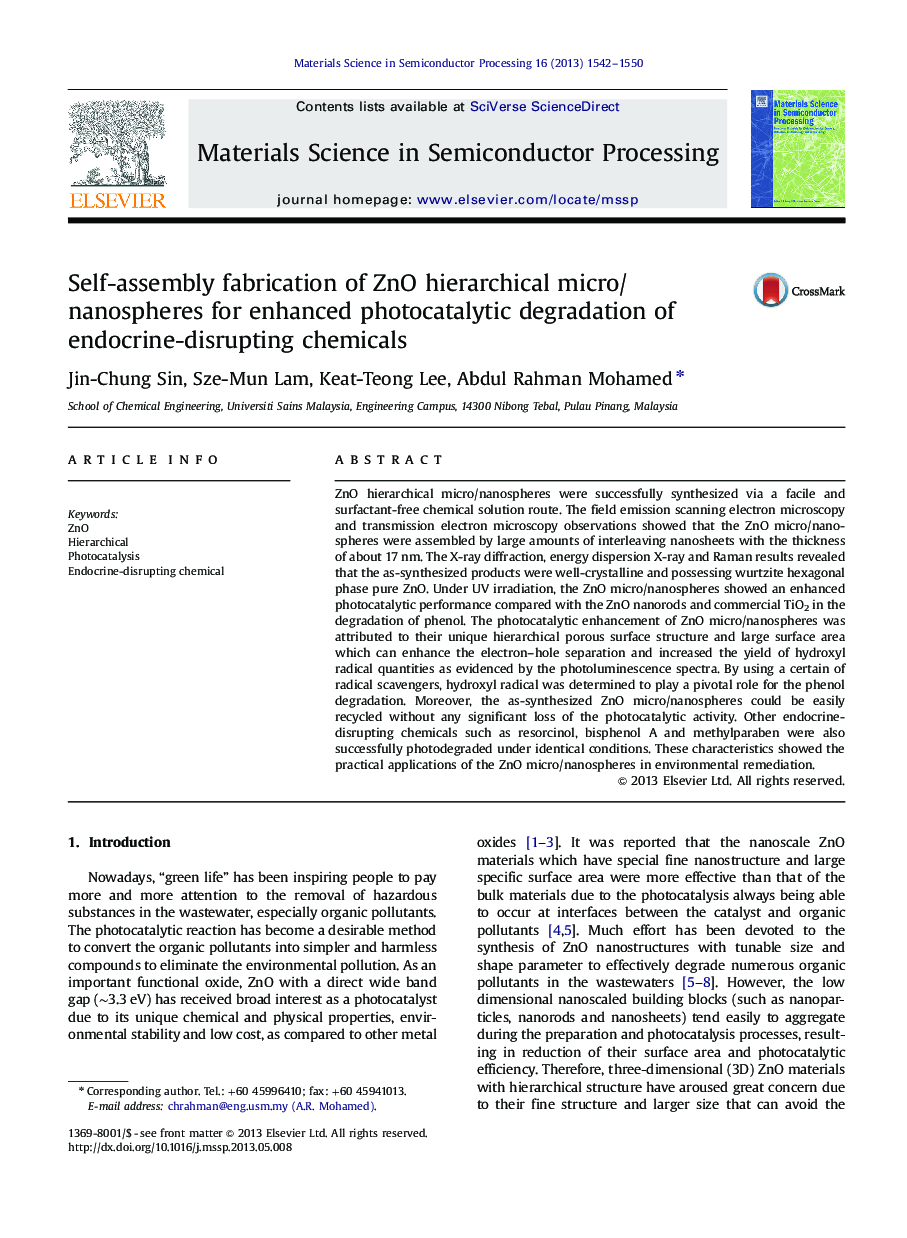| Article ID | Journal | Published Year | Pages | File Type |
|---|---|---|---|---|
| 10407014 | Materials Science in Semiconductor Processing | 2013 | 9 Pages |
Abstract
ZnO hierarchical micro/nanospheres were successfully synthesized via a facile and surfactant-free chemical solution route. The field emission scanning electron microscopy and transmission electron microscopy observations showed that the ZnO micro/nanospheres were assembled by large amounts of interleaving nanosheets with the thickness of about 17Â nm. The X-ray diffraction, energy dispersion X-ray and Raman results revealed that the as-synthesized products were well-crystalline and possessing wurtzite hexagonal phase pure ZnO. Under UV irradiation, the ZnO micro/nanospheres showed an enhanced photocatalytic performance compared with the ZnO nanorods and commercial TiO2 in the degradation of phenol. The photocatalytic enhancement of ZnO micro/nanospheres was attributed to their unique hierarchical porous surface structure and large surface area which can enhance the electron-hole separation and increased the yield of hydroxyl radical quantities as evidenced by the photoluminescence spectra. By using a certain of radical scavengers, hydroxyl radical was determined to play a pivotal role for the phenol degradation. Moreover, the as-synthesized ZnO micro/nanospheres could be easily recycled without any significant loss of the photocatalytic activity. Other endocrine-disrupting chemicals such as resorcinol, bisphenol A and methylparaben were also successfully photodegraded under identical conditions. These characteristics showed the practical applications of the ZnO micro/nanospheres in environmental remediation.
Related Topics
Physical Sciences and Engineering
Engineering
Electrical and Electronic Engineering
Authors
Jin-Chung Sin, Sze-Mun Lam, Keat-Teong Lee, Abdul Rahman Mohamed,
